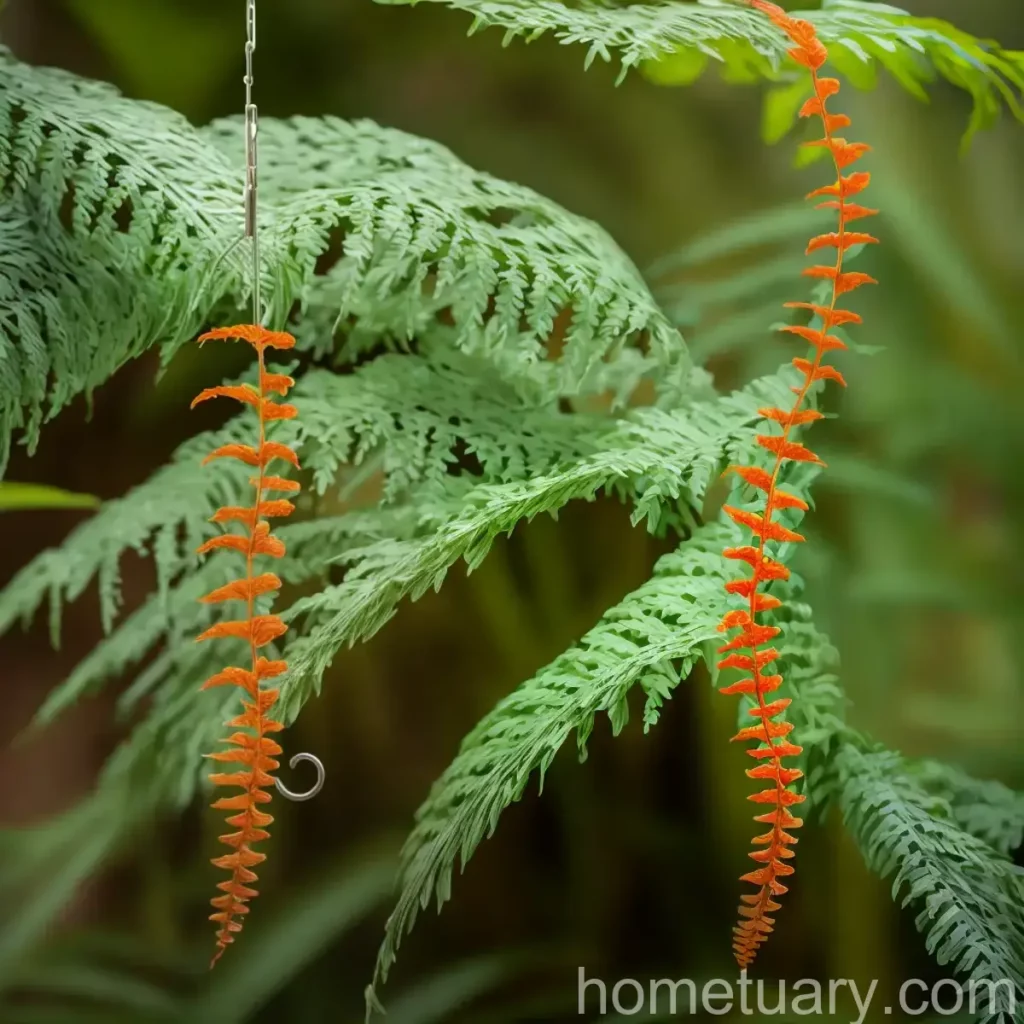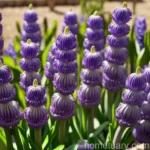Ribbon Fern (Ophioglossum Pendulum): A Comprehensive Plant Care Guide
What is Ribbon Fern?
Ribbon Fern, scientifically known as Ophioglossum Pendulum, is a unique and fascinating plant that belongs to the Ophioglossaceae family. This plant is native to tropical regions and is known for its graceful, ribbon-like fronds and delicate appearance. The Ribbon Fern is a popular choice among plant enthusiasts due to its elegant aesthetic and relatively low maintenance requirements.
In this comprehensive guide, we will explore the various aspects of caring for Ribbon Ferns, including their cultural preferences, uses, water and sunlight requirements, fertilizer needs, soil preferences, propagation methods, containers, common diseases, pests, and much more.
Key Takeaways – Ribbon Fern (Ophioglossum Pendulum)
Before delving into the details of Ribbon Fern care, let’s take a look at the key takeaways about this captivating plant:
- Scientific Name: Ophioglossum Pendulum
- Family: Ophioglossaceae
- Common Name: Ribbon Fern
- Plant Type: Perennial Fern
- Native Habitat: Tropical Regions
- Distinct Feature: Graceful, Ribbon-like Fronds
- Usages: Ornamental Purposes, Indoor and Outdoor Decor
Now, let’s explore the specific care requirements and essential tips for cultivating healthy and thriving Ribbon Ferns.
Culture
Uses
Ribbon Ferns are primarily cultivated for their ornamental value, adding beauty and elegance to both indoor and outdoor spaces. The distinctive ribbon-like fronds make them an attractive choice for terrariums, hanging baskets, and as standalone potted plants. Additionally, their graceful appearance makes them a popular choice for adding a touch of greenery to home and office environments.
Water
Proper watering is crucial for the health and vitality of Ribbon Ferns. These plants thrive in consistently moist soil, but they do not tolerate waterlogged conditions. It is essential to maintain a balance in watering, ensuring that the soil remains evenly moist without becoming excessively soggy. When watering, it’s important to apply the water directly to the soil, avoiding wetting the fronds, which can lead to potential issues such as fungal diseases.
Sunlight
Ribbon Ferns have specific light requirements to maintain their optimal health. While they appreciate bright, indirect light, they are sensitive to direct sunlight, which can cause sunburn and damage to the delicate fronds. Therefore, it is advisable to place Ribbon Ferns in locations with filtered or indirect light, such as near a north-facing window or under sheer curtains. In indoor environments, they can also thrive under artificial grow lights or fluorescent lighting.
Fertilizer
Fertilizing Ribbon Ferns is essential for promoting healthy growth and vibrant foliage. A balanced, water-soluble fertilizer with a formulation such as 10-10-10 or 20-20-20 can be applied at half strength every 4-6 weeks during the growing season, which typically spans from spring to early fall. It’s important to dilute the fertilizer to prevent the risk of over-fertilization, which can lead to nutrient imbalances and potential damage to the plant’s root system.
Soil
The choice of soil is a critical factor in ensuring the well-being of Ribbon Ferns. These plants thrive in a well-draining, peat-based potting mix that offers good moisture retention without becoming waterlogged. A suitable potting mix can be prepared by combining peat moss, perlite, and a small portion of well-decomposed organic matter. Additionally, the soil pH should be slightly acidic to neutral, ranging between 5.5 to 7.0, to provide an ideal growing medium for the ferns.
Pruning
Regular pruning is beneficial for maintaining the appearance and health of Ribbon Ferns. Removing any discolored, yellowing, or damaged fronds helps to improve the overall aesthetics of the plant and prevents the spread of diseases. When pruning, it’s important to use clean, sharp scissors or pruning shears to make precise cuts without causing unnecessary damage to the remaining foliage. This practice also encourages the emergence of new growth and helps the plant maintain a compact and tidy appearance.
Propagation
Ribbon Ferns can be propagated through division, which involves separating the plant into smaller sections to create new individual specimens. This process can be carried out during the growing season, typically in spring or early summer. The steps for propagation are as follows:
- Select a healthy and mature Ribbon Fern with multiple rhizomes.
- Gently remove the plant from its pot and carefully separate the rhizomes, ensuring that each division has a sufficient number of fronds and a well-developed root system.
- Plant the divisions in separate containers filled with a suitable potting mix, and water them thoroughly to promote establishment.
By following these steps, it is possible to propagate Ribbon Ferns successfully and expand their presence in your indoor or outdoor plant collection.
Container Popularity
Ribbon Ferns are highly versatile when it comes to container gardening, as they can thrive in various types of containers based on the specific preferences and design aesthetics of plant enthusiasts. Popular container choices for growing Ribbon Ferns include:
- Terra Cotta Pots: These classic, clay pots provide a natural and rustic look that complements the graceful foliage of Ribbon Ferns.
- Hanging Baskets: Ribbon Ferns can be showcased in elegant hanging baskets, allowing their cascading fronds to create a striking visual display.
- Decorative Containers: Unique and decorative containers add a touch of individuality to the presentation of Ribbon Ferns, enhancing their overall appeal as ornamental plants.
Selecting the right container not only serves as a functional vessel for the plant but also adds an aesthetic dimension to the overall display, contributing to an inviting and visually appealing environment.
Common Diseases
Disease Diagnosis
Ribbon Ferns are generally resilient plants, but they are susceptible to certain diseases and issues that can affect their overall vigor. It’s essential to be aware of the common diseases that may impact Ribbon Ferns and to promptly address any signs or symptoms of plant distress. Some of the most prevalent diseases that may affect Ribbon Ferns include:
- Root Rot: Excessive soil moisture and poor drainage can lead to root rot, causing the roots to become waterlogged and decay. Symptoms include wilting, yellowing fronds, and a foul odor emanating from the soil.
- Fungal Infections: Various fungal pathogens can affect Ribbon Ferns, leading to issues such as leaf spots, blights, and mold development on the fronds. These manifestations often arise in humid and poorly ventilated conditions.
- Bacterial Diseases: Bacterial infections can cause discoloration, soft rot, and overall decline in the health of the plant, often spreading rapidly in conducive environmental conditions.
Careful observation and proactive management are essential in diagnosing and addressing potential diseases to prevent the spread and escalation of the issues.
Common Pests
Ribbon Ferns are relatively resistant to pests, but they may occasionally encounter infestations from common insects. Vigilance and prompt intervention can help mitigate the impact of these pests and prevent any significant damage to the plant. Some of the typical pests that may affect Ribbon Ferns include:
- Spider Mites: These tiny arachnids can infest the undersides of the fronds, causing stippling, webbing, and overall decline in the plant’s health.
- Scale Insects: Scale insects can attach themselves to the fronds of Ribbon Ferns and feed on the plant’s sap, leading to yellowing, stunted growth, and a weakened appearance.
- Mealybugs: Mealybugs may gather in the nooks and crannies of the fronds, secreting honeydew and causing a decline in overall plant vitality.
By implementing suitable pest management strategies, such as regular inspection, maintaining proper hygiene, and utilizing natural or chemical control methods if necessary, it is possible to effectively address and mitigate pest-related issues.
Botanist’s Tips
Fun Facts
To further appreciate the unique qualities and charm of Ribbon Ferns, here are some intriguing fun facts about these captivating plants:
- Primitive Characteristics: Ribbon Ferns belong to a primitive group of ferns known as the Ophioglossaceae family, which is characterized by their distinctive reproductive structures and evolutionary significance.
- Rare in Cultivation: While Ribbon Ferns are highly valued for their graceful appearance, they are relatively less common in cultivation compared to other fern varieties, adding to their allure and appeal to plant enthusiasts.
- Air Purifying Qualities: Ribbon Ferns are known to contribute to indoor air purification by helping to remove pollutants and enhance air quality, making them a valuable addition to interior spaces.
These fun facts not only showcase the fascinating nature of Ribbon Ferns but also contribute to a deeper understanding and admiration for these unique plants.
Links to External Resources
To further expand your knowledge and appreciation for Ribbon Ferns, here are some valuable external resources that offer additional insights and information about the cultivation and care of these extraordinary plants:
- The American Fern Society
- Royal Horticultural Society – Ferns
- University of Florida IFAS Extension – Ferns and Fern Allies
- Missouri Botanical Garden – Ophioglossum Pendulum
These resources offer a wealth of knowledge and expertise on the cultivation, characteristics, and care requirements of Ribbon Ferns, providing valuable guidance for both novice and experienced plant enthusiasts.
In conclusion, Ribbon Ferns, with their graceful beauty and relatively simple care requirements, present an intriguing and captivating choice for plant enthusiasts looking to enhance their indoor or outdoor spaces with an elegant touch of greenery. By understanding and implementing the essential care guidelines outlined in this comprehensive guide, you can create an ideal environment for Ribbon Ferns to flourish and thrive, adding a unique and visually striking element to your plant collection and living spaces.















